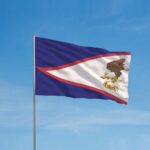D.R.E.S.S. Syndrome, held annually on July 16, is sometimes also called drug-induced hypersensitivity syndrome or drug hypersensitivity syndrome and is the focal point of National D.R.E.S.S. Syndrome Day. D.R.E.S.S — full form ‘drug reaction with eosinophilia and systemic symptoms’ — is a type of drug allergy that causes very adverse reactions to drugs in some people. This day was founded on the premise that because of this special day, more patients, doctors, researchers, and others will be able to honor and celebrate the ones lost to this illness. There’s also the advantage of educating the general public about this disease for faster and better treatment.
History of National D.R.E.S.S. Syndrome Day
When humans’ immune systems react badly to certain medications, the body exhibits different — often serious — reactions. This type of effect is the base of the D.R.E.S.S. syndrome, and medical experts believe it is potentially life-threatening because of its severe nature. Knowledge of this syndrome has also been reported very late in comparison to other diseases and is as yet lacking in research.The first reported cases of ‘hypersensitivity to drugs’ came only in the 1930s. Some patients were given anticonvulsant drugs — meant to prevent seizures or stop an ongoing episode — and the introduction of these drugs led to some adverse reactions. The same reaction was observed again in the 1940s when a new drug to treat swollen lymph nodes was given to a few patients. The new drug was combined with an anticonvulsant drug, which resulted in the patients developing rashes, fever, and other reactions. Medical professionals coined a name for this hypersensitivity — anticonvulsant hypersensitivity syndrome — after believing it was only anticonvulsants that trigger this kind of reaction.Eventually, however, doctors noticed multiple other drugs, not just anticonvulsants, induced adverse reactions, and the term changed again. This time, they called it ‘drug-induced hypersensitivity (D.I.H.S.)’ or ‘hypersensitivity syndrome (H.S.S.).’ The name subsequently changed according to the drug at fault, becoming ‘allopurinol hypersensitivity syndrome,’ ‘sulfone syndrome,’ etc. The current term, D.R.E.S.S., was coined only in the late 1990s after a group of researchers observed a series of 24 patients and their reactions to clinical drugs. They decided on a common name for this hypersensitivity to avoid confusion while diagnosing patients.Research on this disease has been sporadic given its uncommon nature — few people get it, and fewer report it. Recent research on this disease has been sporadic and infrequent, probably why a special day was established, to raise awareness and encourage more studies on this illness.
National D.R.E.S.S. Syndrome Day timeline
Treatment with drugs meant to reduce or stop seizures has adverse side effects on patients and becomes the first group of cases showing drug-related adverse symptoms.
Based on reactions to seizure medications, medical professionals dub the syndrome 'anticonvulsant hypersensitivity syndrome.’
Researcher H. Bocquet officially introduces a term for the various drug-related severe allergies — the acronym D.R.E.S.S.
A study finds most people who ‘recovered’ from D.R.E.S.S. have developed new diseases; a study two years after this claims thyroid diseases are the most common among the long-term complications.
National D.R.E.S.S. Syndrome Day FAQs
How long does it take to recover from D.R.E.S.S. syndrome?
If treatment is given early on, patients can recover at any time between six to nine weeks. Unfortunately, some patients can go on to develop prolonged illnesses as a result of this syndrome, which will require lifelong care.
Is this syndrome curable?
For most patients, this answer is yes. However, patients must continue to be monitored because even if they appear completely cured, some symptoms could recur after a brief spell.
Is D.R.E.S.S. syndrome the same as Red Man Syndrome?
Both diseases are not the same, although D.R.E.S.S can be mistaken for Red Man Syndrome (R.M.S.) because both present with a wise-spread red rash on the body. However, R.M.S. is the body’s reaction (often adverse) to one particular medicine — an antibiotic called ‘vancomycin.’
National D.R.E.S.S. Syndrome Day Activities
-
Learn about D.R.E.S.S. and its symptoms
Go through the existing studies, patient testimonials, and doctor's notes to learn all you can about this disease and what it looks like. That way, you are prepared if someone close to you begins showing symptoms.
-
Spread awareness
Don't keep your information to yourself. The more people that know about D.R.E.S.S., the better the patient's chance of getting treated in time. So share your resources, talk to friends and family, and tell them about this day.
-
Participate in D.R.E.S.S. awareness activities
Some medical organizations and communities organize special events for this day. Check out how you can participate or lend a hand. If you can't find any such events on this day, how about petitioning local communities and medical professionals to host awareness events and talks with the general public, to increase their knowledge of D.R.E.S.S.
5 Facts About D.R.E.S.S.
-
It's a rare disease
Statistics say around one in every 1,000 to 10,000 people are affected by the D.R.E.S.S. syndrome, which is why the medical community officially classifies it as 'rare.'
-
Any drug can trigger this syndrome
Although incidences of D.R.E.S.S. have occurred more frequently with some drugs than with others, there's very little in the way of research that proves one drug causes this illness over another.
-
The 'R' once meant something else
The 'R' from D.R.E.S.S. once meant 'rash' instead of 'reaction,' but this was changed because some instances of D.R.E.S.S. had no rash at all.
-
Anyone can get it
Adults and children, male and female, and of any race, are all susceptible to this syndrome.
-
Symptoms show up late
Unlike other allergies and drug-related side effects which occur around 24 hours after taking the medication, D.R.E.S.S. symptoms are delayed, showing up almost two to eight weeks after the drug has been administered and sometimes continue even after the medication has been stopped.
Why We Love National D.R.E.S.S. Syndrome Day
-
It can save lives
With a mortality rate of 10%, health professionals say early diagnosis and treatment are crucial to avoid grave consequences. We need a day like this to increase instances of early reporting and diagnoses, to prevent fatalities.
-
It helps raise awareness
Anyone anywhere in the world can be susceptible to D.R.E.S.S. What we need is more awareness and understanding of this disease, a cause this event bravely takes up, thus increasing the chances of appropriate treatment for the ones diagnosed with this syndrome.
-
It helps affected people find support
Going through a rare illness is scary enough without adding the lack of awareness, sometimes even among medical professionals, to the mix. National D.R.E.S.S. Syndrome Day helps people recognize and connect with others battling the same adverse reaction to drugs, and in doing so, helps them find their support system.
National D.R.E.S.S. Syndrome Day dates
| Year | Date | Day |
|---|---|---|
| 2023 | July 16 | Sunday |
| 2024 | July 16 | Tuesday |
| 2025 | July 16 | Wednesday |
| 2026 | July 16 | Thursday |
| 2027 | July 16 | Friday |

























